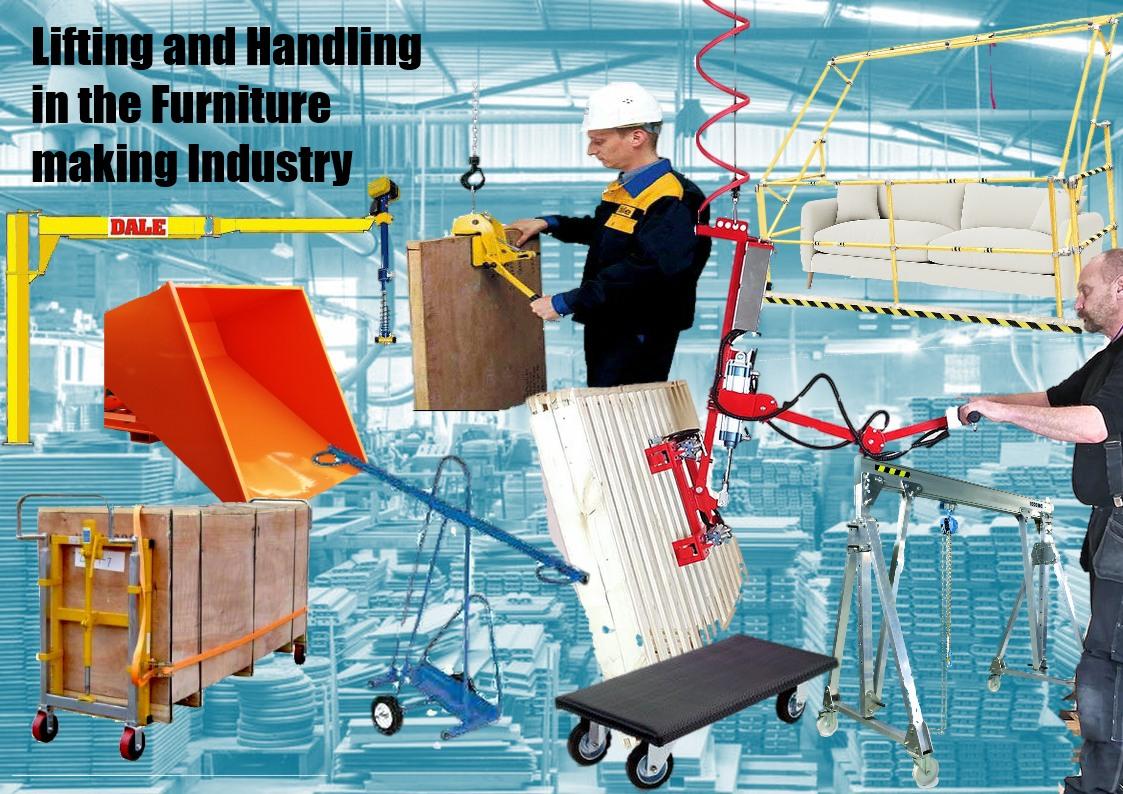Lifting and handling in the furniture-making industry is a common and essential task that requires careful planning and execution. Furniture makers often must move heavy, bulky or awkward items such as wood, metal, fabric or finished products. These activities can pose significant risks to the health and safety of workers, customers and the public if not done correctly. Some of the potential hazards include:
- Musculoskeletal injuries, such as sprains, strains, fractures or hernias, from lifting or carrying too much weight, twisting or bending awkwardly, or using improper techniques or equipment.
- Cuts, bruises, burns or abrasions from sharp edges, rough surfaces, hot materials, or tools.
- Falls, slips, or trips from uneven or slippery floors, obstacles, platforms, stairs or ramps, or unstable loads.
- Collisions or impacts from moving vehicles, machinery, equipment, or falling objects.
- Damage to property or equipment from dropping, hitting or scraping items.
How do I prevent handling accidents?
To prevent or reduce these risks, furniture makers should follow some general principles of lifting and handling:
Employers and workers should follow these guidelines:
- Assess the task before starting and identify the hazards, risks and control measures. Consider the weight, size, shape and condition of the item; the distance and route of the move; the availability and suitability of lifting aids or equipment.
- The number and skill of workers involved; and the environmental factors such as lighting, ventilation and temperature.
- Assess the load before lifting or moving it. Consider its weight, size, shape, and stability. Use a scale or a force gauge if necessary. Do not lift or carry more than you can handle comfortably.
- Use appropriate lifting aids or equipment, such as carts, dollies, pallet trucks, forklifts, or cranes, whenever possible.
- Overhead cranes and jibs don’t take up valuable aisle floor space and negate the need for forklift access in confined spaces, which risk collision with workers and machinery.
- Use specialised lifting attachments such as forklift attachments - booms, jibs, rubbish skips and scoops
- For heavy boards, etc., consider using vacuum suction lifters or grippers.
- Storing large furniture can take up valuable floor space, but access to mezzanine platforms can create fall hazards; for longer loads, consider fitting an extra wide safety pallet gate that protects the gap in the handrail, whether open or closed.
Make sure equipment is in good working condition and suitable for the task. Follow the manufacturer's instructions and safety precautions when using them.
See our range of Furniture industry lifting and handling products CLICK HERE
Tips for Safe Manual Handling
- If manual lifting is unavoidable, use proper techniques and equipment such as gloves, boots, belts or harnesses. Lift with your legs and keep your back straight. Avoid twisting or bending your body. Hold the item close to your body and at waist level. Do not lift above your shoulders or below your knees. Do not lift more than you can handle comfortably. Seek help from others if needed.
- Communicate clearly and coordinate with your co-workers when lifting or moving items together. Use signals, signs or verbal commands to indicate your actions and intentions. Avoid distractions and interruptions. Be aware of your surroundings and watch out for potential hazards.
- Plan ahead and organise your work area to minimise lifting and handling. Store frequently used items close to where they are needed and at a convenient height. Eliminate clutter and obstructions. Provide adequate space for movement and storage. Use ramps or platforms to avoid lifting items over obstacles.
- Take regular breaks and rest periods to avoid fatigue and strain. Stretch your muscles and joints before and after lifting or handling. Report any injuries or incidents to your supervisor or manager. Seek medical attention if needed.
Lifting and handling in the furniture-making industry can be done safely and efficiently if workers follow these guidelines and use common sense. By doing so, they can protect themselves, their co-workers and their customers from harm and ensure the quality of their products.

